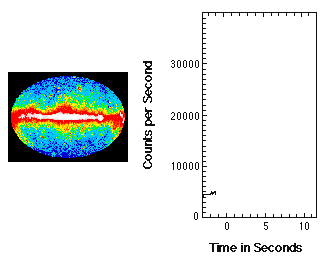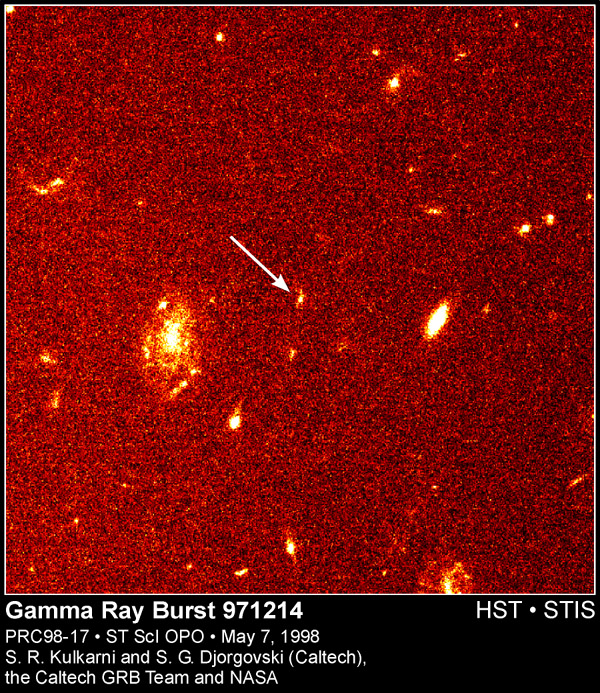Gamma-Ray Bursts


| Gene Smith's Astronomy Tutorial Gamma-Ray Bursts |
 |

Gamma-Ray Bursts are turning out to be one of the most explosive new areas of astronomical research. Gamma-ray bursts were discovered in 1967 by the Vela Satellites launched to monitor compliance with the 1963 Nuclear Test-Ban Treaty by detecting gamma-rays from atmospheric nuclear tests. Fortunately, it was quickly established that the bursts are of extraterrestrial origin (no, not ET!) rather than some rogue state initiating nuclear war. Initially the number of bursts was too small and the ability to pinpoint the bursts too poor to determine their origin.
 Gamma-ray burst observed by BATSE | In 1991 the Compton Gamma-Ray Observatory carried its Burst and Transient Source Experiment (BATSE), built with participation by UCSD's high energy astrophysicists. into orbit. The gamma-ray bursts last from a few seconds to a couple of minutes and, until very recently, were undetected at other wavelengths. BATSE has observed a couple thousand bursts and determined that they are distributed uniformly around the sky. |

Gamma Ray Burst Links

![]() The Big Bang
The Big Bang
![]() Quasars & AGN
Quasars & AGN
![]() Outreach & Education
Outreach & Education
![]() CASS Home
CASS Home
Conducted by Gene Smith, CASS/UCSD.
Comments?
You may send email to hsmith@ucsd.edu
Prof. H. E. (Gene) Smith
CASS 0424 UCSD
9500 Gilman Drive
La Jolla, CA 92093-0424
Last updated: 15 March 2000